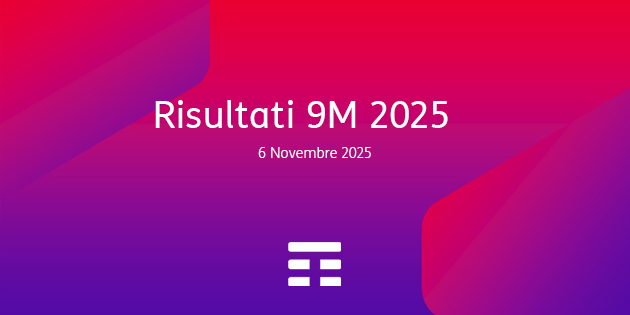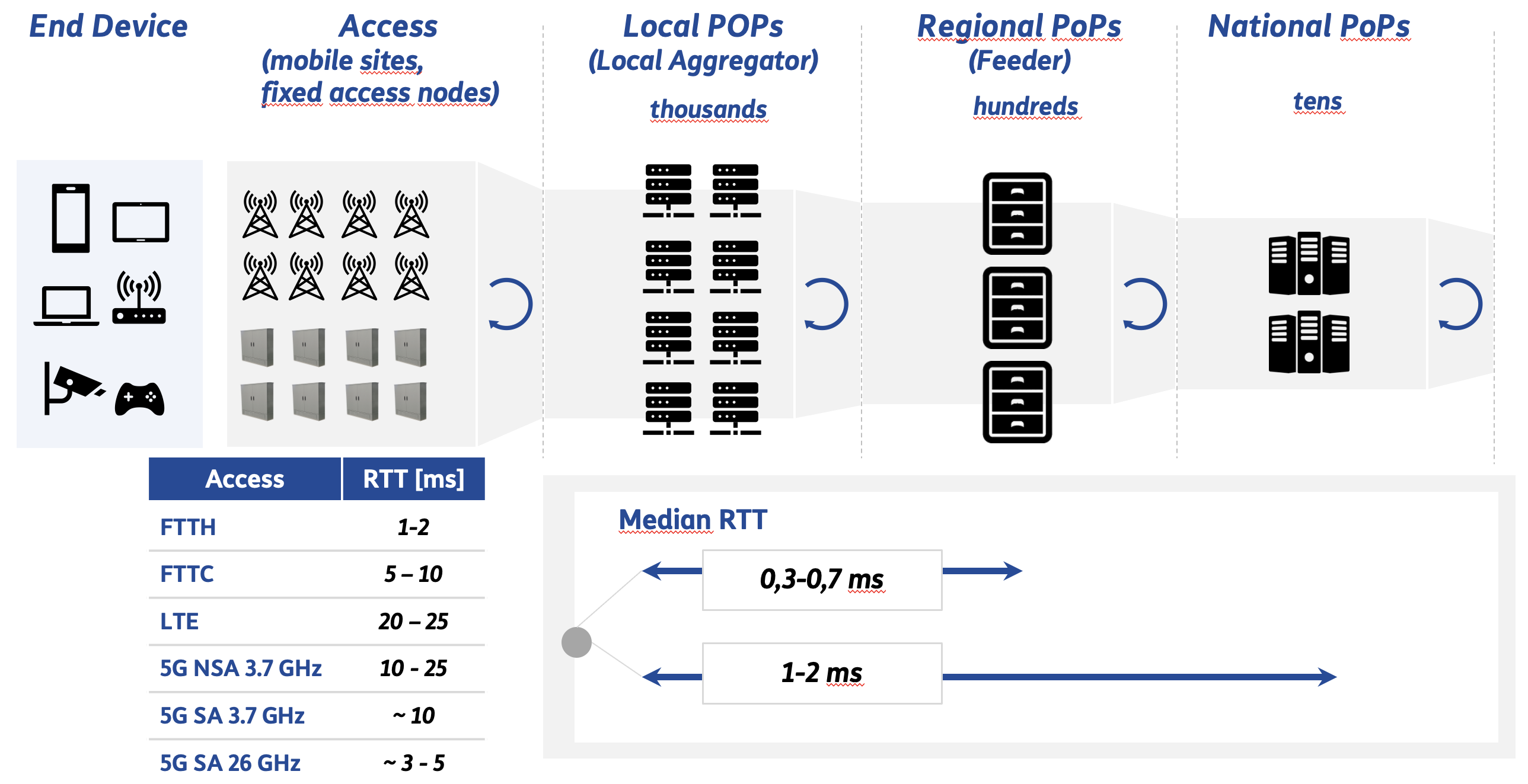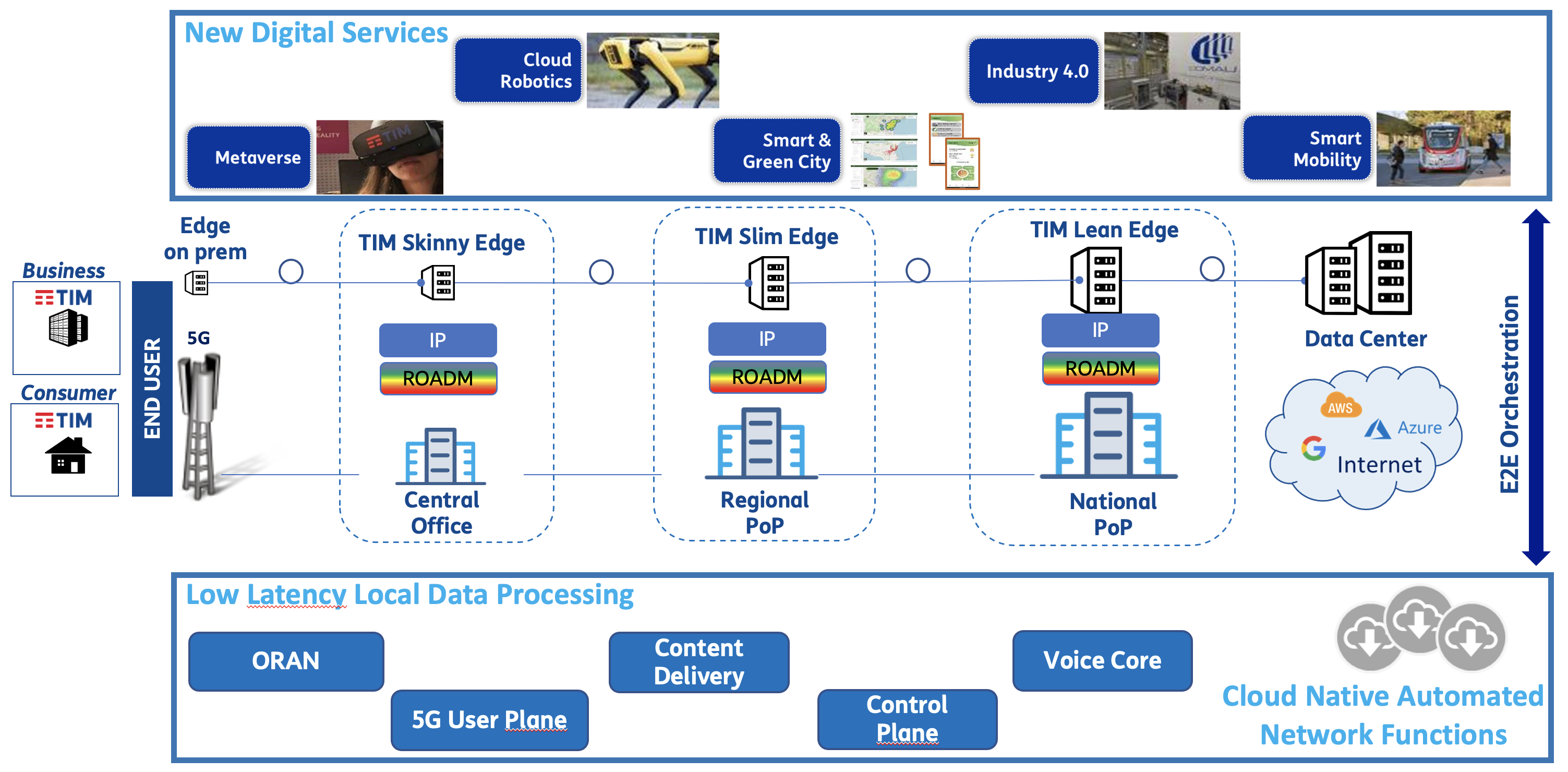The local and regional levels perform functions of aggregation and transport of traffic. The progressive expansion of IP technology up to Local Aggregators (R-Evolution project) is a pre-requisite for the descent of network and service functions to the Edge. National level hosts the Fixed Core Network functions, the Mobile Core Network functions (in progressive expansion to reach all the National PoPs with the new Cloud Native 5G Core Network) and the service and content distribution platforms, including Content Delivery Networks (CDN) and OTT «Alien Caches». Interconnection to the Public Internet takes place at the International Peering point.
Under the current network structure, distributing the functionalities currently present (or planned) on the national sites to the regional sites, would produce an advantage of about 1ms (see Figure 1) in terms of reduction of Round Trip Time (RTT), which can be considered negligible compared to the latency requirements of most of the available applications. Currently a subset of PoPs is hosting Telco Cloud islands, which are Data Centers featuring a single virtualization technology (NFVI, Network Function Virtualization Infrastructure), specifically designed to meet Network Functions requirements. TIM NFVI is already evolving to further increase its footprint in all PoPs of the national backbone and, depending on market needs, at Far Edge level. Telco Network Functions will be deployed, in virtualized and/or Cloud Native form, over such infrastructure to enable new services. Telco Cloud interworking with Hyperscale Cloud Providers (HCP) will be considered as well depending on service and commercial needs. To support this evolution towards the Edge, TIM is working with its partners to develop the following technological enablers:
- a pre-integrated, modular Telco Cloud stack specifically designed for use at the Edge of the network;
- the automation and orchestration solutions necessary to manage all aspects of the Telco Cloud Infrastructure and the onboarded Network Functions.
In the short-medium term, no mass market services that require latencies/throughputs not compatible with the current TIM network development are expected: development of the Edge in the national sites therefore seems to satisfy almost all applications. The main drivers that can move Edge beyond might be:
- activation of Ultra Low Latency services and applications (e.g: Extended Reality, Self-driving vehicles, Industrial Automation, eHealth);
- reliability, security and segregation of data in restricted areas, for services such as video surveillance, Smart Cities, Private Networks;
- efficient balancing of the computational load between device and network;
- transport network off loading;
- decreasing of nodes outages impacts;
- evolution of fixed and mobile access technologies (ORAN, OLT/LA unbundling).
TIM Brazil also adopts a hierarchical NFVI architecture and the deployment of Telco Edge Nodes is still under discussion. The main candidates to become Telco Edge nodes are the current DCC (Data Center Core) and DCE-R (Edge Data Centers Regionals) in synergy with the dual mode 5G/4G packet core) implementation.
Services components and service layer
Regarding the platforms enabling services at the Edge, Telco and Service components will share the same virtualized infrastructure provided by TIM, depending on their requirements. Service components can be provided by several entities: as a private cloud provided by TIM, by Hyperscale Cloud Providers, by “Telco-oriented” emerging technologies (e.g. MobiledgeX, Capgemini Ensconce). Edge computing presents new challenges for application layer, such as managing highly distributed applications and data, as well as orchestrating Edge operations at significant scale or running real-time workloads across distributed infrastructure. With latency being a key issue, applications that require direct connections to centralized services can be risky, so Edge applications might need to combine code and contents into single packages to ensure the best possible performance.
Moreover, with Edge-to-core bandwidth being a significant constraint, it’s important to understand the costs of moving data and building application architectures that are designed to handle distributed data.
We may exploit at the best Edge Computing when a single, complete and comprehensive view of a “global state” is unnecessary, and when this is true, the application becomes much more portable to an Edge platform. The best solutions will often include a combination of Edge and centralized Computing. In such a hybrid computing model, centralized computing will be used for compute-intensive workloads, data aggregation and storage, coordinating operations across geographies, and traditional back-end processing. Edge Computing, on the other hand, can help solve problems at the source, in near real-time. Distributed architectures will enable to place applications at any tier from cloud to Edge, wherever it makes the most sense.
On Prem and Micro Edge solutions
Micro Edge concept is defined as an extreme extension of Edge solutions: it allows to share programmability features, orchestration and remote management platforms. Micro Edge is a TIM resource on customer premise, more powerful than a simple network access device because its target functionalities could be dynamically reconfigured over the time on the base of customer needs, avoiding the on prem physical deployment and maintenance of additional dedicated HW devices. Micro Edge solution fits as enabler both for fixed access telco services and for private network services: in this context partnerships with HCPs are also being evaluated, in order to provide a complete solution to the Enterprises that integrates telco functions and cloud functions together.
In the Brazilian market, there is a growing interest in private networks, showing to TIM Brazil that the Edge Computing infrastructure could be associated with this kind of scenario.
Federation and Standards
A critical success factor of the Edge deployment is the capability to federate platforms between MNOs. The federation allows customers to experience seamlessly the Edge service across the operator boundaries, creating a cloud continuum, even across different nations. Application providers are hence able to enhance the footprint and reachability of their application over several federated MNOs. In this context, the “Telcooriented” technologies appear to be ahead, implementing the East-West Bound Interfaces defined in the GSMA Operator Platform Group.
Other Standard Developing Organizations and fora supporting the evolution of Edge Computing are 3GPP, CNCF (Linux Foundation) and ONF.






